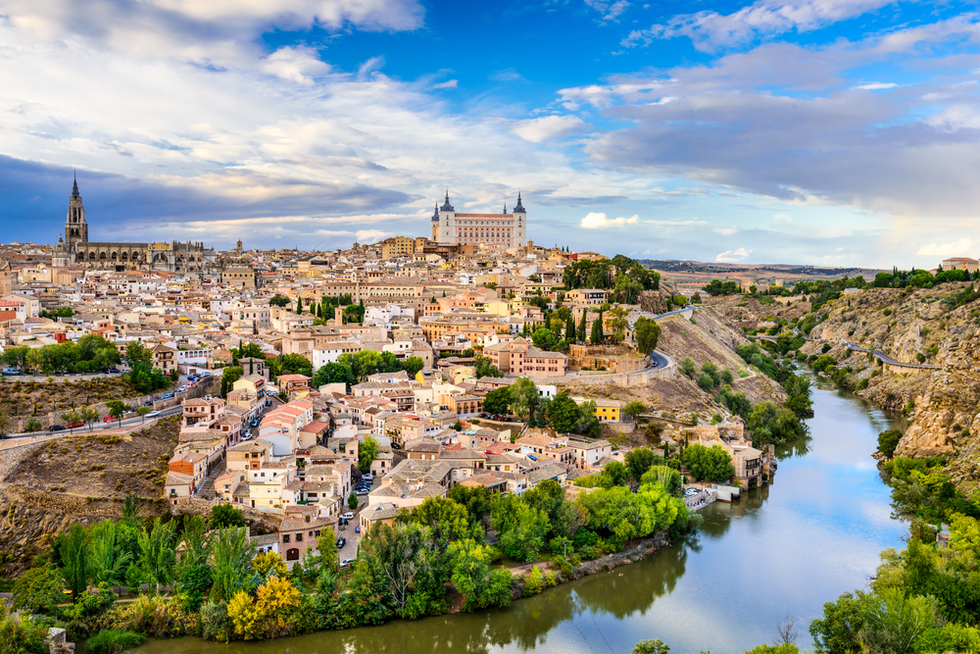A crossroads of cultures over the millennia, Toledo’s strong Arabic, Jewish, and Christian elements have not entirely eclipsed the Roman and Visigothic eras. The hilltop old city is a UNESCO World Heritage Site and surprisingly little of its appearance has changed since El Greco painted his adopted home in the 16th century. Even then it was ancient.
The close medieval streets were deliberately constructed to be barely wide enough for a man and his donkey to pass, but they are strikingly practical—offering cool, welcome shade in the summer and a shield from winter winds. Wrapped on three sides by a bend in the Río Tajo, Toledo overlooks the plains of La Mancha from a high bluff. This outcrop provided a natural fortress in the center of the Iberian Peninsula. The Romans made it the capital of central Iberia, and the Visigoths made it the capital of their kingdom. For roughly a century, it was the capital of a regional Muslim kingdom—an outlier of Córdoba—before it was re-conquered by Alfonso VI in 1085. The kings of Castilla ultimately made Toledo the capital of Spain. Even after the court moved to Madrid in 1561, Toledo remained the national religious center as the seat of the primate of Spain. As the governing city of so many cultures, it retains more layers of history than almost anywhere else in Spain.
Although most of Toledo’s medieval defensive walls have been taken down, the city still feels like a hilltop fortress. So approach it in that manner, beginning your visit by circumnavigating the roads that once lay just inside the walls, eerily marked by the preserved ceremonial gates (notably the Arabic archway of Puerta del Sol on the north side). To better understand how defenders could watch potential enemies as they approached, spend some time surveying the surrounding plain from Mirador Barrio Nuevoacross the street from the Museo Sefardí. Once you begin spiraling into the city interior, two key squares are the centers of life in Toledo. You’ll find local children playing street soccer or learning to ride bicycles (as well as travelers visiting the tourist office) at the Plaza del Ayuntamiento, southwest of the cathedral. Plaza de Zocodover, northeast of the cathedral, is filled with outdoor cafes popular both with visitors and, at night, with young Toledanos. Both squares serve as reference points, as they represent transitions between neighborhoods. Plaza de Zocodover is also the central point where local buses stop in the old city.









